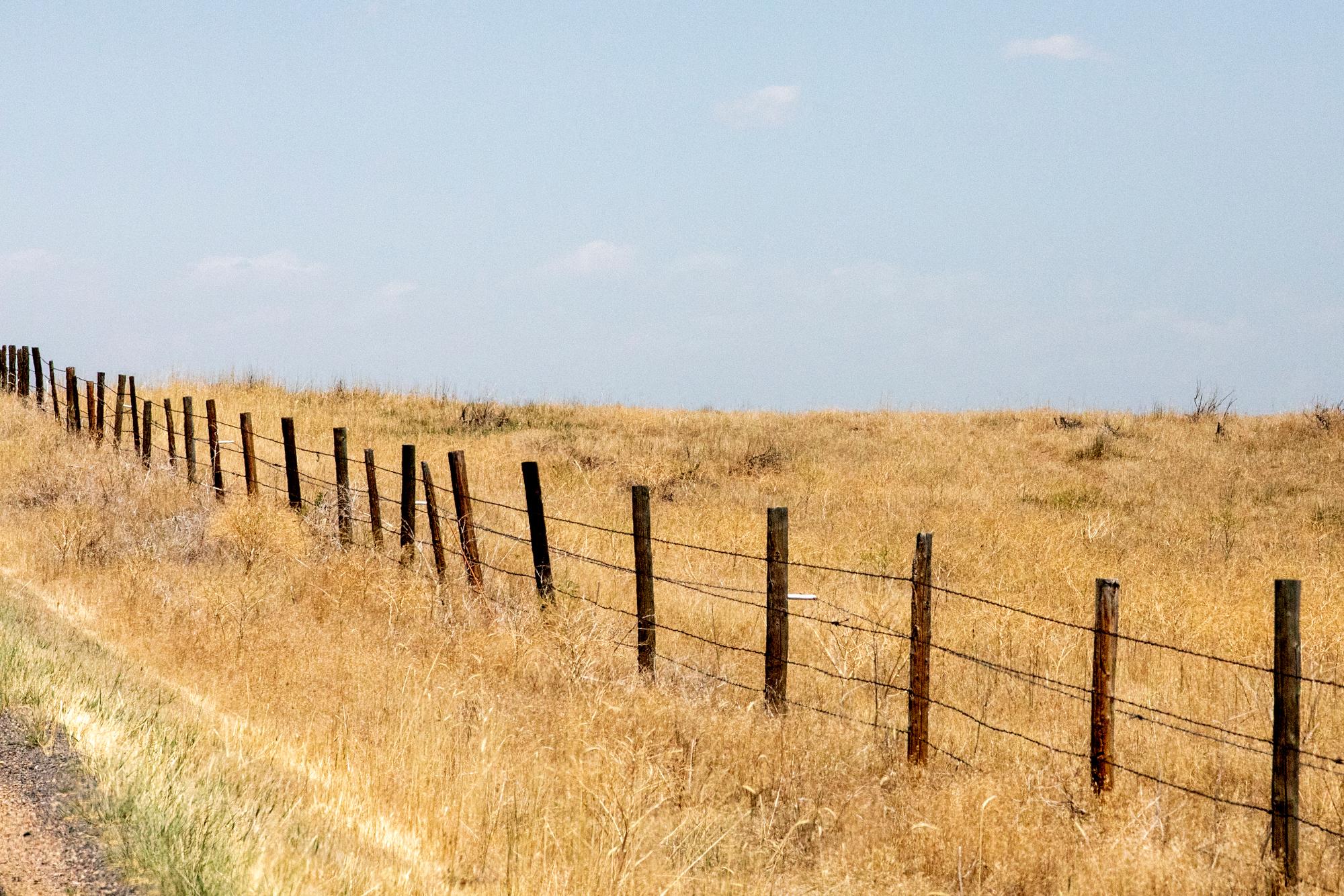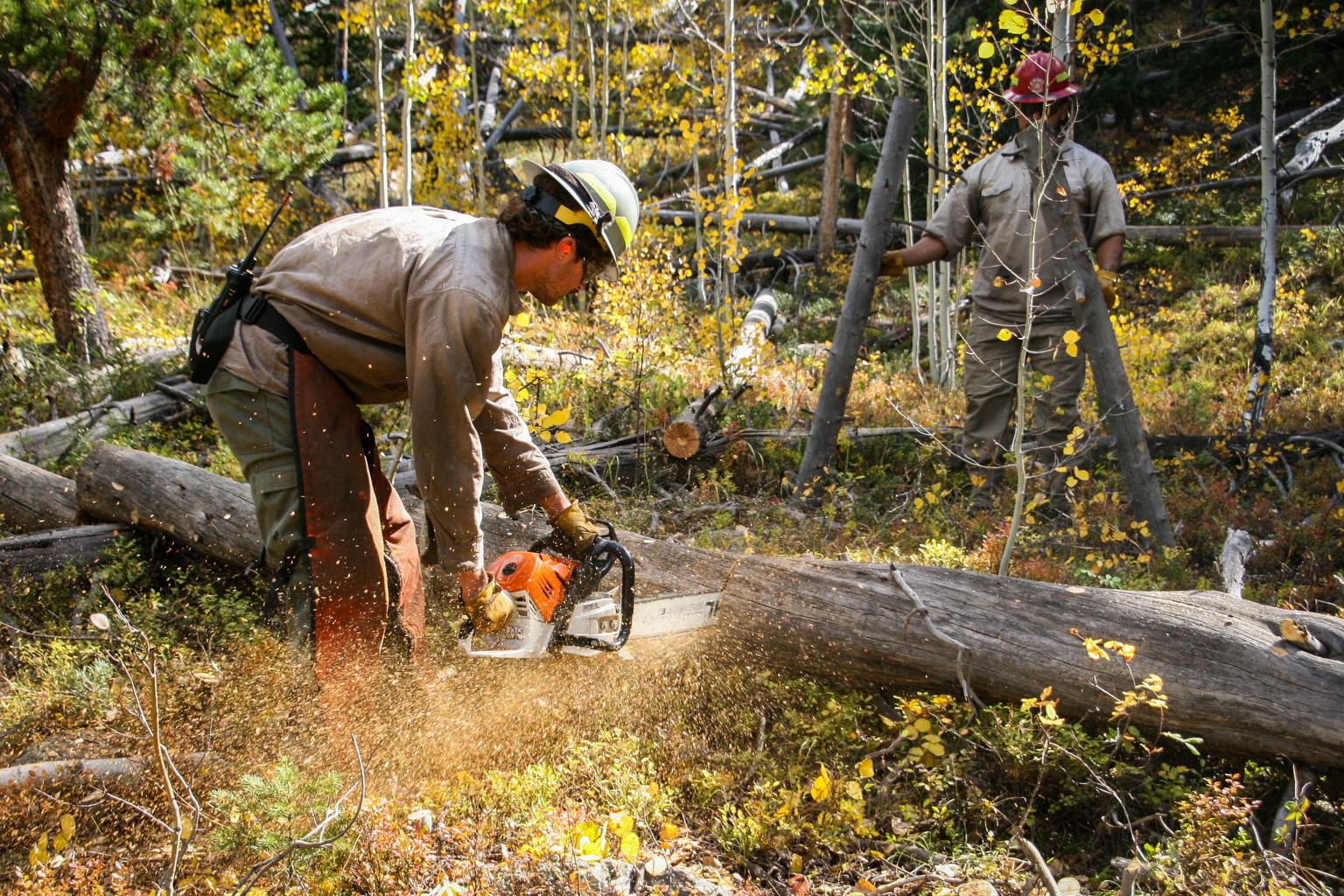
Driving west along Interstate 70 through the mountains near the Eisenhower Tunnel with her husband, Grand Junction resident Carolyn Acker looked out the window. She saw dead trees — many dead trees.
“I was just curious if there's a plan to cut those trees down and take them away in an effort to mitigate for wildfires?” Acker asked Colorado Wonders.
More than 24 million acres, a third of the state, are forested with trees like spruce fir, ponderosa and lodgepole pine. Three-quarters of those forests are publicly owned.
Colorado has seen massive, record-breaking wildfires in recent years. Its forests are under threat from climate change, other human activities and pests like bark beetles.
So it’s a big question. And a big job. Resources are limited, so forestry crews work to identify the places where they can make the greatest impact.
On a recent bluebird Colorado day above East Vail, aspen trees show off peak bright yellows. Just north of I-70, up a road in a subdivision, in a steep drainage, a three-person crew is thinning the forest, sawing up old logs with a chainsaw, cutting down underbrush.
“We're picking up all the dead and diseased trees and stuff like that,” said Austin Castro, a firefighter with Vail Fire and Emergency Services. “We're piling them so we can burn them hopefully in the coming next winter.”
The sawing, clearing and eventual burning of the dead and diseased timber is preventative maintenance, part of a fuel-reduction program that Castro said could ensure his team doesn’t have to return someday to fight a wildfire.
“With topography and stuff we got going on here, it'd be pretty difficult,” Castro said.
The Town of Vail’s wildland crew is cutting 22 acres of brush and aspen near the Booth Creek Trailhead, plus four acres of timber east of Bighorn Creek.
Paul Cada, Vail Fire’s wildland battalion chief, said this work is part of a new partnership with Vail crews doing similar work on land managed by the U.S. Forest Service. “Really what we're focusing on is creating some space between the forest and the community,” he said.
That space is key because it buys time for firefighters to battle a blaze if one broke out in the vast ghost forest of grayish dead pines, some still standing, some littering the ground.
He peeled off a strip of bark from a fallen log to reveal a pattern in the wood.
“This is a good example of a tree that was probably killed nearly 20 years ago now,” he said. “A lot of these trees were attacked in the early 2000s by the mountain pine beetle.”
There’s a gallery of cuts in the tree, bored out when the pests laid eggs, leaving the next generation of insects to chomp on stressed trees.
“All of these are native forest insects, this is just part of the natural disturbance cycle in our forest here,” Cada said. “Certainly the drought, warming climate are having impacts on the overall health of our forests.”
Firefighters didn’t do a lot of widespread mitigation work like this for a century. That created dense patches of dead trees, vulnerable to bugs and big fires. And even now, the resources, in people and funding, available to deal with this mitigation are dwarfed by the size of the job.
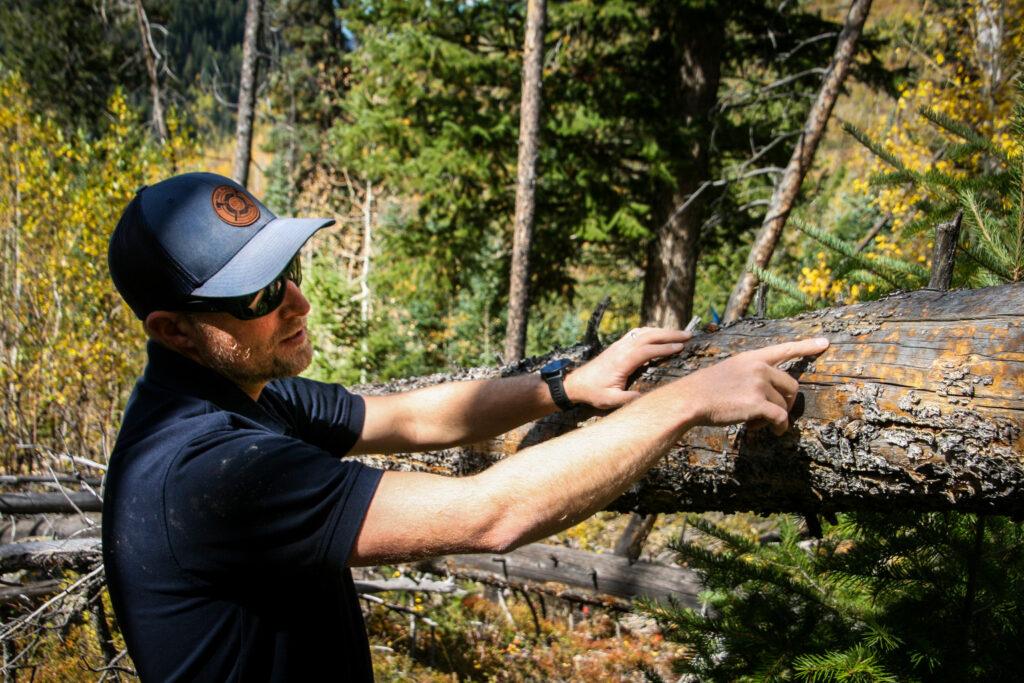
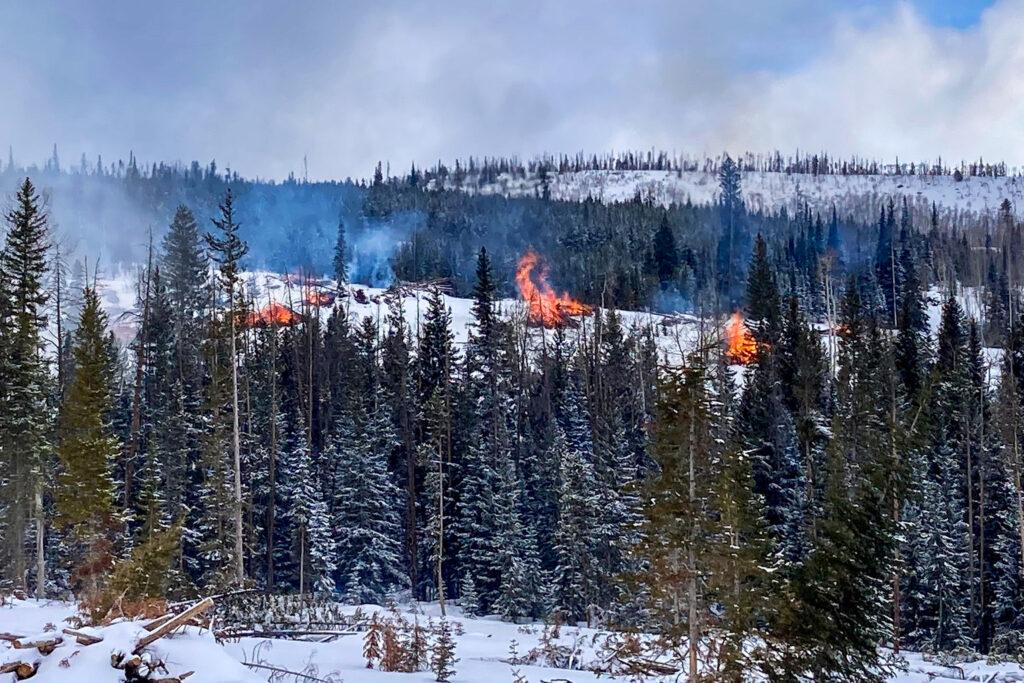
“This is happening over hundreds of thousands of acres in Colorado. So it's an issue on a massive scale,” said David Boyd, public affairs officer with the White River National Forest.
Now forest managers are adopting a more nuanced, multifaceted approach.
“We are just trying to use every tool available to us, the Forest Service, in addressing this wildfire crisis that we're in,” said Kat Gray, the fuels planner for the White River National Forest, which spans the high country in north central Colorado roughly from Silverthorne to west of Glenwood Springs.
That includes strategic planning, lots of mapping and analysis, public feedback and partnerships with other governments, she said. “Because fires don't care about boundaries.”
Now, it is a new era, said Ryan Harlow, acting timber program manager for the Pike-San Isabel National Forest in central Colorado. “Now we can do more of thinning and prescribed burning because we actually need some fire in the landscape,” he said.
The idea is to literally fight fire with fire. To avoid massive out-of-control blazes, prescribed burns are used, set on purpose, controlled and done in favorable weather conditions.
Fire helps ecosystems recycle nutrients and foster biodiversity.
Hopefully, Harlow said, “that gives the trees a better chance to survive, whether it's climate change or these other stressors of beetle attacks and various other diseases.”
Back in East Vail, the dead wood that crews cut has no commercial value.
Colorado once had a larger timber industry. Since the 1970s, many of the state’s sawmills have shut down as the U.S. Forest Service protected land for wildlife and recreation.
Sometimes depending on access and location, there can be some logging, Boyd said. There was a biomass plant, not far away, that would chip the wood on site and then burn it to generate electricity. But it is no longer operating.
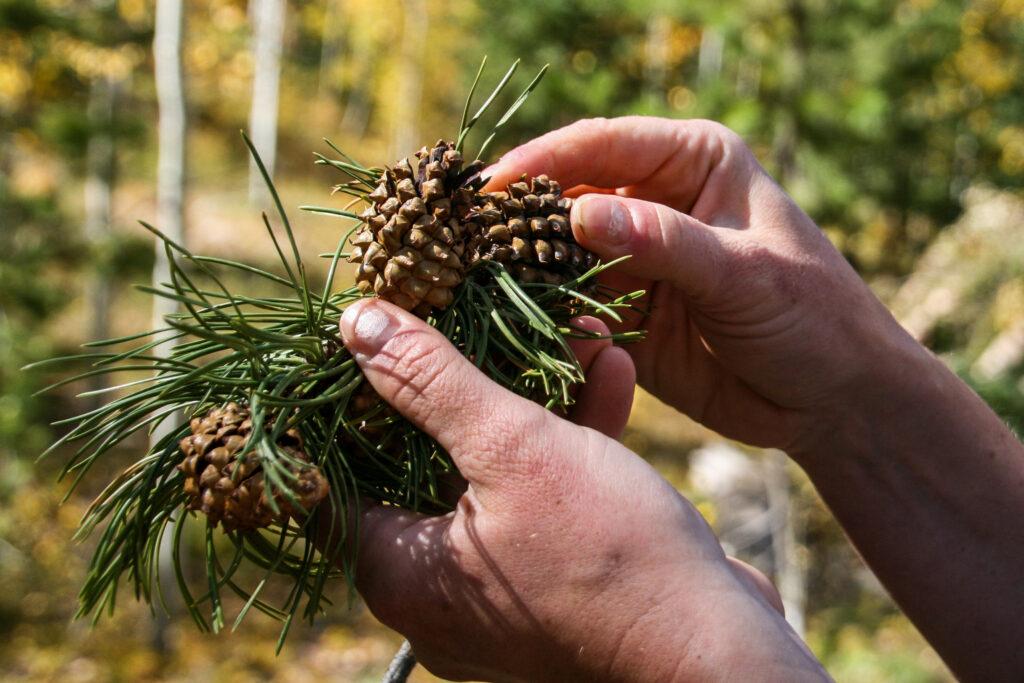
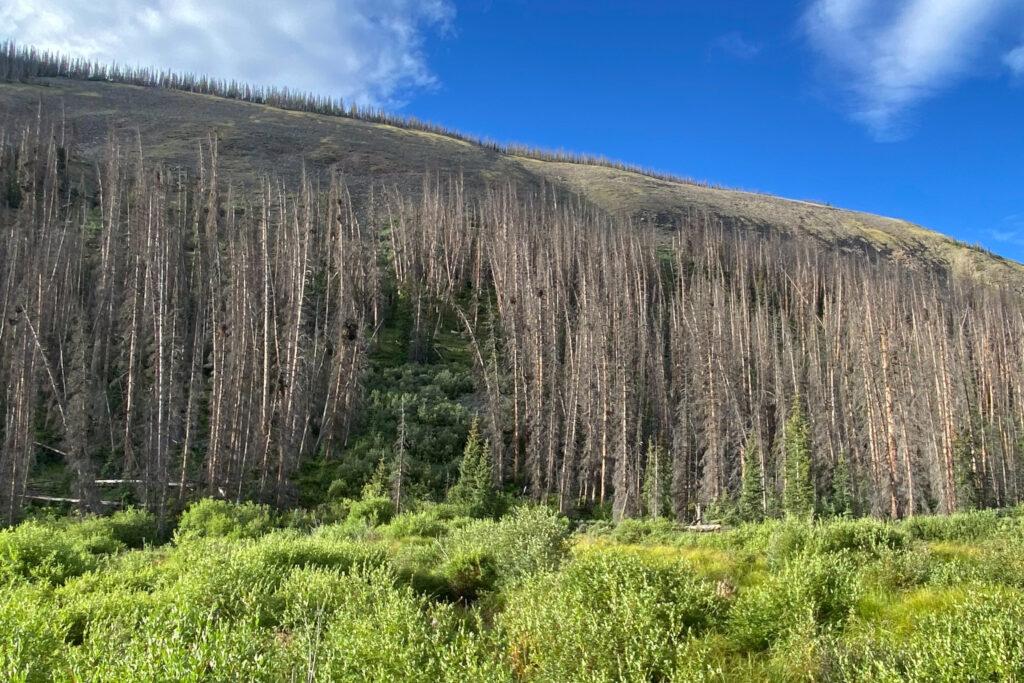
“So that adds to complexity about what can we do with the wood,” Boyd said.
So the plan is to burn the bunches, called slash piles.They do it in the winter, when there is snow on the ground and when there’s enough wind to clear smoke — but not the strong gusts that can spread the fire.
“A little bit of smoke now prevents a lot of smoke later when we have that wildfire,” said Vail Fire’s Paul Cada. “By doing it during times when we have good smoke dispersal, we can pick times that we can minimize the impacts of the community.”
The prescribed fires help propagate the next generation of trees. Fire was central to the way of life for Indigenous peoples; they used it to clear areas for crops, manage the land for plants and animals and hunt game.
Kat Gray, with the Forest Service, held up a sprig with pine cones. “Lodgepole pine cones need fire to open up their fresh healthy cones and release the seeds,” she said.
“We're mimicking the wildfire here with our cutting and pile burning. And the heat from our pile burns, as well as any future low intensity fires, is going to open up these lodgepole cones and start adding to the next generation of the forest,” Gray said. That’s in addition to the aspen, spruce and fir that are already starting to grow there.
The idea is to use fire to reset the forest. The one that regrows will be healthier, more diverse, more resilient and less prone to catastrophic blazes, Cada said.
“Once we get it burned, it starts looking real good,” Castro said. “The forest looks a lot cleaner and healthier and good patches of trees, growing everywhere and it looks nice.”

